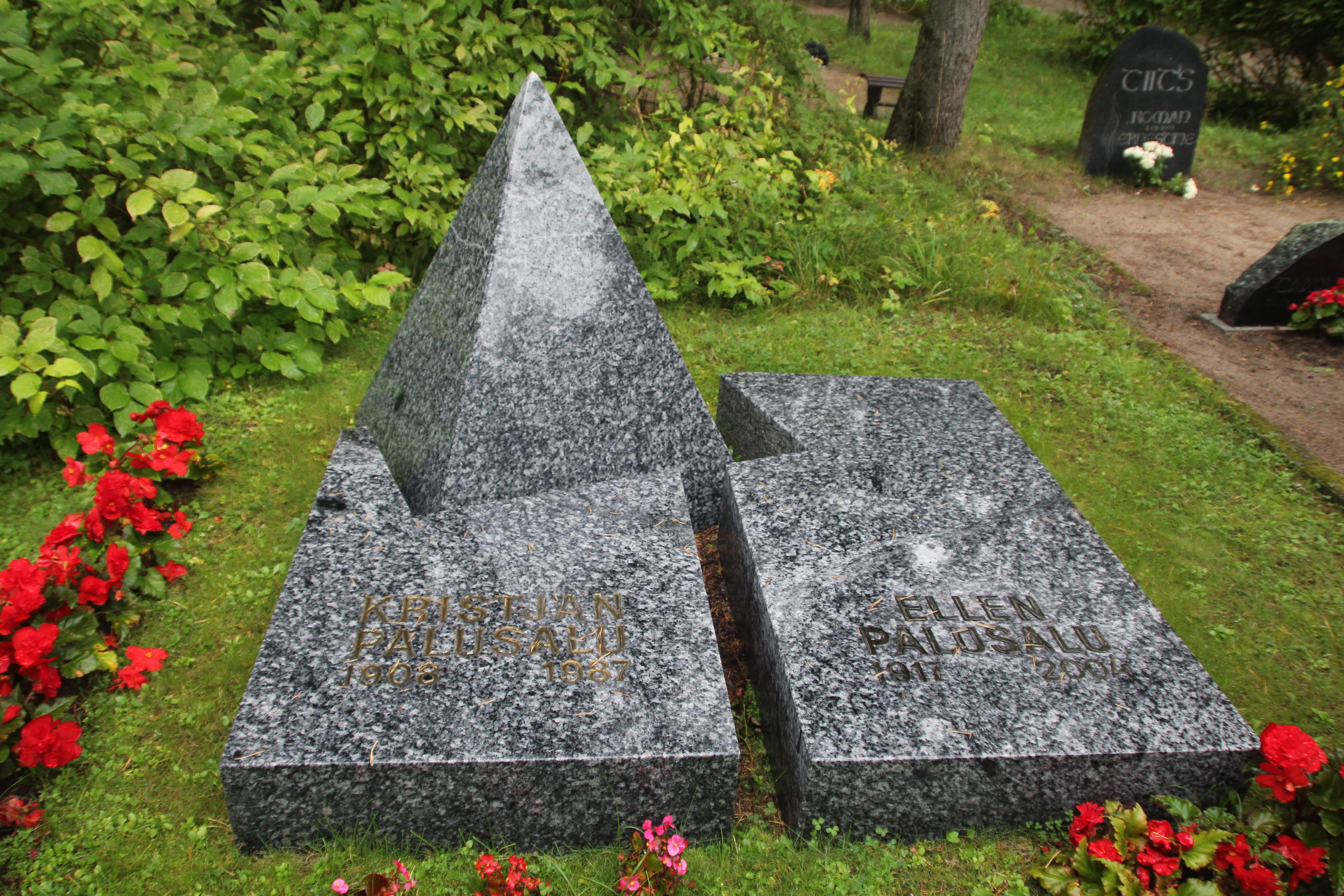|
Matsi, Pärnu County
Matsi is a village in Lääneranna Parish, Pärnu County, in southwestern Estonia, on the coast of the Gulf of Riga. It has a population of 17 (as of 1 January 2011). Orasaare Manor (''Orrasaar''), support manor of Saulepi manor, was located in Matsi. Heavyweight wrestler and Olympic winner Kristjan Palusalu Kristjan Palusalu (until 1935 Kristjan Trossmann, – 17 July 1987) was an Estonian heavyweight wrestler and Olympic winner. Palusalu became the first and only wrestler in Olympic history ever to win both the Greco-Roman and freestyle heavy wei ... (1908–1987), was born in Varemurru village which is now part of Matsi village. References External linksWebsite of Saulepi region(Kulli, Maade, Matsi, Õhu, Rädi, Raespa, Saare, Saulepi and Vaiste villages) Villages in Pärnu County Kreis Wiek {{pärnu-geo-stub ... [...More Info...] [...Related Items...] OR: [Wikipedia] [Google] [Baidu] |
Populated Places In Estonia
Populated places in Estonia (officially: settlement units), are cities or settlement units of rural municipalities, but only cities have administrative functions. Settlement units are divided into settlements and urban regions et, asum (subdivisions of cities). Officially there are five types of settlement units in Estonia: *town/city ( et, linn) *town without municipal status () *borough () *small borough () *village () See also * Municipalities of Estonia *List of cities and towns in Estonia *Counties of Estonia Counties ( et, maakond, plural ') are the first-level administrative subdivisions of Estonia. Estonian territory is composed of 15 counties, including 13 on the mainland and 2 on islands. The government (') of each county is led by a ' (gover ... Notes External links Place Names Board of Estonia [...More Info...] [...Related Items...] OR: [Wikipedia] [Google] [Baidu] |
List Of Sovereign States
The following is a list providing an overview of sovereign states around the world with information on their status and recognition of their sovereignty. The 206 listed states can be divided into three categories based on membership within the United Nations System: 193 UN member states, 2 UN General Assembly non-member observer states, and 11 other states. The ''sovereignty dispute'' column indicates states having undisputed sovereignty (188 states, of which there are 187 UN member states and 1 UN General Assembly non-member observer state), states having disputed sovereignty (16 states, of which there are 6 UN member states, 1 UN General Assembly non-member observer state, and 9 de facto states), and states having a special political status (2 states, both in free association with New Zealand). Compiling a list such as this can be a complicated and controversial process, as there is no definition that is binding on all the members of the community of nations concerni ... [...More Info...] [...Related Items...] OR: [Wikipedia] [Google] [Baidu] |
Estonia
Estonia, formally the Republic of Estonia, is a country by the Baltic Sea in Northern Europe. It is bordered to the north by the Gulf of Finland across from Finland, to the west by the sea across from Sweden, to the south by Latvia, and to the east by Lake Peipus and Russia. The territory of Estonia consists of the mainland, the larger islands of Saaremaa and Hiiumaa, and over 2,200 other islands and islets on the eastern coast of the Baltic Sea, covering a total area of . The capital city Tallinn and Tartu are the two largest urban areas of the country. The Estonian language is the autochthonous and the official language of Estonia; it is the first language of the majority of its population, as well as the world's second most spoken Finnic language. The land of what is now modern Estonia has been inhabited by '' Homo sapiens'' since at least 9,000 BC. The medieval indigenous population of Estonia was one of the last " pagan" civilisations in Europe to adopt Ch ... [...More Info...] [...Related Items...] OR: [Wikipedia] [Google] [Baidu] |
Counties Of Estonia
Counties ( et, maakond, plural ') are the first-level administrative subdivisions of Estonia. Estonian territory is composed of 15 counties, including 13 on the mainland and 2 on islands. The government (') of each county is led by a ' (governor) who represents the national government (') at the regional level. Governors are appointed by the national government for a term of five years. Each county is further divided into municipalities of two types: urban municipalities (towns, ') and rural municipalities (parishes, '). The number and name of the counties were not affected. However, their borders were changed by the administrative reform at the municipal elections Sunday 15 October 2017, which brought the number of municipalities down from 213 to 79. List Population figures as of 1 January 2021. The sum total of the figures in the table is 42,644 km2, of which the land area is 42,388 km2, so that 256 km2 of water is included in the figures. History In the first ... [...More Info...] [...Related Items...] OR: [Wikipedia] [Google] [Baidu] |
Pärnu County
Pärnu County ( et, Pärnu maakond or ''Pärnumaa''; german: Kreis Pernau) is one of 15 counties of Estonia. It is situated in the south-western part of the country, on the coast of Gulf of Riga, and borders Lääne and Rapla counties to the north, Järva and Viljandi counties to the east, and Latvia to the south. In January 2013 Pärnu County had a population of 81,428 – constituting 6.3% of the total population of Estonia. Pärnu County is the largest county of Estonia in terms of land area. History In Pärnu county there is the oldest known human settlement in Estonia, which is the town of Sindi, and it is up the Pärnu River, near the village of Pulli. It dates back to 8500 BCE in the Mesolithic historical period. County Government The County Government (Estonian: ''Maavalitsus'') is led by a governor (Estonian: ''maavanem''), who is appointed by the Government of Estonia for a term of five years. Since 1 January 2010, the Governor position is held by Andres Metsoj ... [...More Info...] [...Related Items...] OR: [Wikipedia] [Google] [Baidu] |
Municipalities Of Estonia
A municipality ( et, omavalitsus, plural ) is the smallest administrative subdivision of Estonia. Each municipality is a unit of self-government with its representative and executive bodies. The municipalities in Estonia cover the entire territory of the country. Municipalities in Estonia are of two types: *Urban municipalities or towns (, singular ) *Rural municipalities or Parish (administrative division), parishes (, singular ). There is no other status distinction between them. Municipalities may contain one or several Populated places in Estonia, settlements. All but 5 urban municipalities (Haapsalu (urban municipality), Haapsalu, Narva-Jõesuu (urban municipality), Narva-Jõesuu, Paide (urban municipality), Paide, Pärnu (urban municipality), Pärnu and Tartu (urban municipality), Tartu) plus 1 rural municipality (Ruhnu Parish, Ruhnu) contain only one settlement. As of 2017, there are no longer any "borough-parishes", i.e. rural municipalities with only one borough-typ ... [...More Info...] [...Related Items...] OR: [Wikipedia] [Google] [Baidu] |
Lääneranna Parish
Lääneranna Parish ( et, Lääneranna vald) is a rural municipality (Estonia), rural municipality in Pärnu County. It includes the town of Lihula.https://www.laanerannavald.ee/ (accessed 7 March 2020) Settlements ;Town Lihula ;Boroughs Virtsu ;Villages There are 150 villages: Alaküla, Pärnu County, Alaküla, Allika, Pärnu County, Allika, Aruküla, Pärnu County, Aruküla, Emmu, Esivere, Haapsi, Hanila, Helmküla, Hälvati, Hõbeda, Pärnu County, Hõbeda, Hõbesalu, Irta, Iska, Estonia, Iska, Joonuse, Jänistvere, Järise, Pärnu County, Järise, Järve, Pärnu County, Järve, Jõeääre, Pärnu County, Jõeääre, Kadaka, Pärnu County, Kadaka, Kalli, Pärnu County, Kalli, Kanamardi, Karinõmme, Karuba, Estonia, Karuba, Karuse, Kaseküla, Kause, Keemu, Kelu, Estonia, Kelu, Kibura, Kidise, Kiisamaa, Kilgi, Pärnu County, Kilgi, Kinksi, Kirbla, Kirikuküla, Pärnu County, Kirikuküla, Kiska, Estonia, Kiska, Kloostri, Koeri, Estonia, Koeri, Kokuta, Koonga, Korju, Kuhu, Kuke, ... [...More Info...] [...Related Items...] OR: [Wikipedia] [Google] [Baidu] |
Gulf Of Riga
The Gulf of Riga, Bay of Riga, or Gulf of Livonia ( lv, Rīgas līcis, et, Liivi laht) is a bay of the Baltic Sea between Latvia and Estonia. The island of Saaremaa (Estonia) partially separates it from the rest of the Baltic Sea. The main connection between the gulf and the Baltic Sea is the Irbe Strait. The Gulf of Riga, as a sub-basin of the Baltic, also includes the Väinameri Sea in the West Estonian archipelago. Geography Extent The International Hydrographic Organization defines the Gulf of Riga's western limit as "A line running from Lyser Ort (57°34'N), in Latvia, to the South extreme of Œsel Island, through this island to Pammerort (22°34'E), thence to Enmast Point, the S extreme of Dagö, through Dagö to Takhkona Point, the North extreme thereof, and on to Spithamn Point in Estonia". Islands Major islands in the gulf include Saaremaa, Kihnu, and Ruhnu, which are all controlled by Estonia. Kihnu covers an area of . Saaremaa island is responsible for ... [...More Info...] [...Related Items...] OR: [Wikipedia] [Google] [Baidu] |
Saulepi
Saulepi is a village in Lääneranna Parish, Pärnu County Pärnu County ( et, Pärnu maakond or ''Pärnumaa''; german: Kreis Pernau) is one of 15 counties of Estonia. It is situated in the south-western part of the country, on the coast of Gulf of Riga, and borders Lääne and Rapla counties to the nor ..., in southwestern Estonia, on the coast of the Gulf of Riga. It has only 7 inhabitants (as of 1 January 2011). Saulepi Manor (''Saulep'') was established in 1797 by detaching it from the nearby Vana-Varbla Manor (''Alt-Werpel''). Simple wooden main building was constructed in the middle of the 19th century. Nowadays it is a private property. The islets Kõrksaar and Rootsiku laid also belong to Saulepi village. References External linksWebsite of Saulepi region(Kulli, Maade, Matsi, Õhu, Rädi, Raespa, Saare, Saulepi and Vaiste villages) Villages in Pärnu County Kreis Wiek {{pärnu-geo-stub ... [...More Info...] [...Related Items...] OR: [Wikipedia] [Google] [Baidu] |
Kristjan Palusalu
Kristjan Palusalu (until 1935 Kristjan Trossmann, – 17 July 1987) was an Estonian heavyweight wrestler and Olympic winner. Palusalu became the first and only wrestler in Olympic history ever to win both the Greco-Roman and freestyle heavy weight events. Palusalu was born in Varemurru village, Saulepi Parish, Lääne County (now Matsi village, Lääneranna Parish, Pärnu County) as one of eight children to Jüri and Liisu Trossmann. He is best remembered for winning two gold medals at the 1936 Olympic Games in Berlin. He was given the honor of carrying the Estonian flag to Olympiastadion. The triumph was celebrated across Estonia with Palusalu and other Estonian athletes touring the country by rail giving speeches. A third of the inhabitants of Tallinn turned out to greet him and the Estonian government granted him a farm. After the Soviet Union occupied Estonia in 1940, Palusalu was sent to hard labour in Kotlas, Russia in 1941. He tried to escape with other prisoners but ... [...More Info...] [...Related Items...] OR: [Wikipedia] [Google] [Baidu] |
Villages In Pärnu County
A village is a clustered human settlement or community, larger than a hamlet but smaller than a town (although the word is often used to describe both hamlets and smaller towns), with a population typically ranging from a few hundred to a few thousand. Though villages are often located in rural areas, the term urban village is also applied to certain urban neighborhoods. Villages are normally permanent, with fixed dwellings; however, transient villages can occur. Further, the dwellings of a village are fairly close to one another, not scattered broadly over the landscape, as a dispersed settlement. In the past, villages were a usual form of community for societies that practice subsistence agriculture, and also for some non-agricultural societies. In Great Britain, a hamlet earned the right to be called a village when it built a church. [...More Info...] [...Related Items...] OR: [Wikipedia] [Google] [Baidu] |





